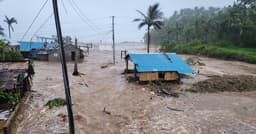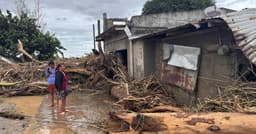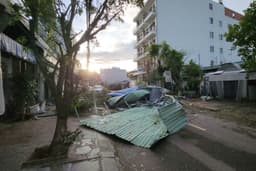Home / Disasters and Accidents / Typhoon Kalmaegi's Destruction Coincides with Global Climate Talks
Typhoon Kalmaegi's Destruction Coincides with Global Climate Talks
7 Nov
Summary
- Typhoon Kalmaegi kills at least 188 people in the Philippines
- Warmer sea surface temperatures "pack more fuel" into tropical cyclones
- Coastal regions facing growing threat from storm surges and sea level rise
In the wake of Typhoon Kalmaegi's devastation, experts are sounding the alarm on the growing threat of extreme weather events driven by climate change. The deadly storm, which swept through the Philippines earlier this week, has now caused destruction in central Vietnam, killing at least 188 people across the region.
According to researchers, the intensification of Typhoon Kalmaegi is directly linked to the exceptionally warm sea surface temperatures in the western North Pacific and South China Sea. These elevated temperatures, a result of human-caused global warming, have "packed more fuel" into the tropical cyclone, making it more powerful and wetter.
The timing of Kalmaegi's path of destruction is particularly poignant, as it coincides with a major climate conference in Brazil, where delegates from over 190 countries are gathered to discuss ways to control greenhouse gas emissions. Scientists warn that the failure to address climate change has led to an increase in the frequency and intensity of such storms.




